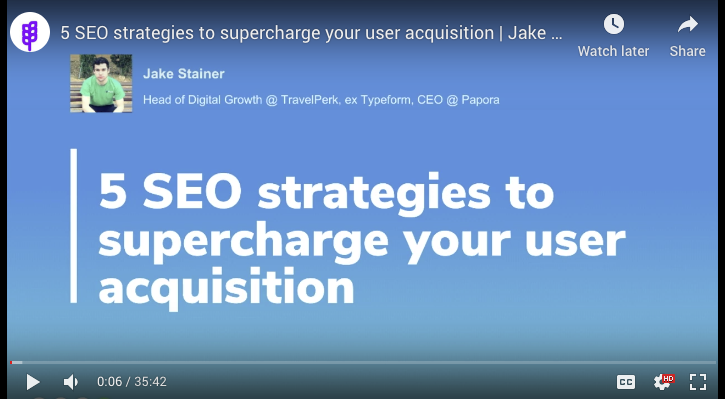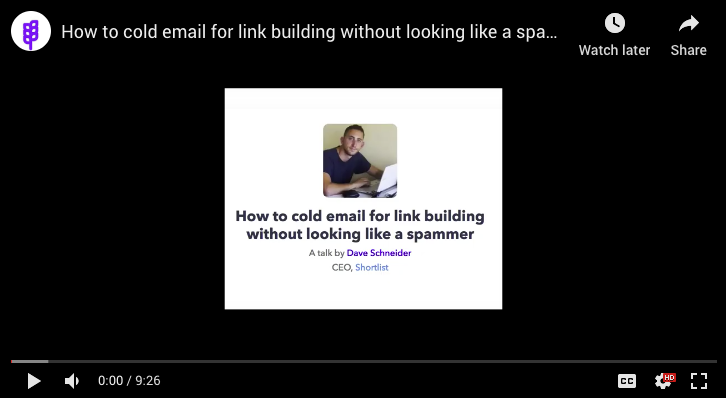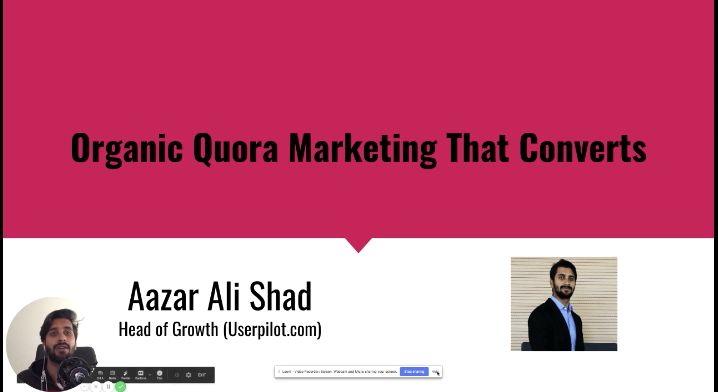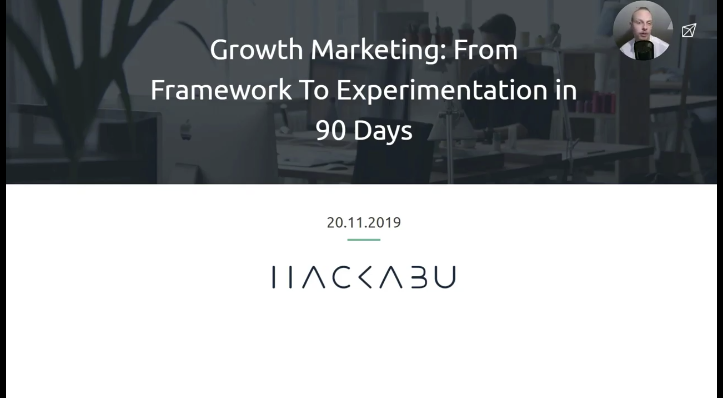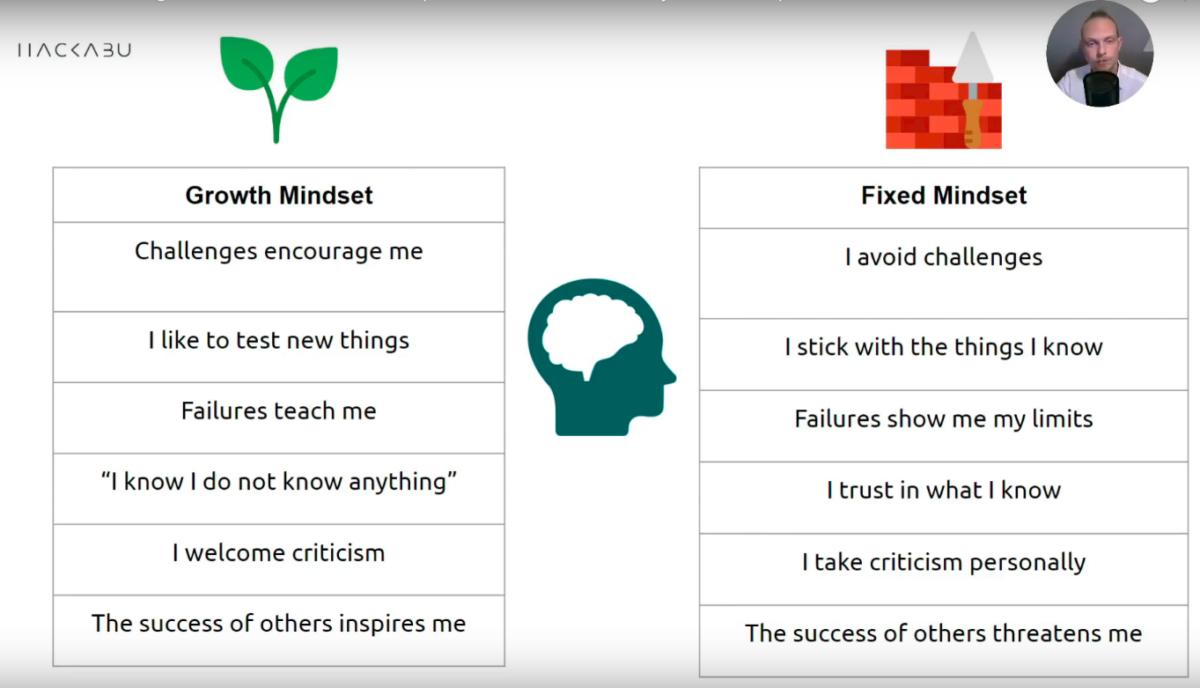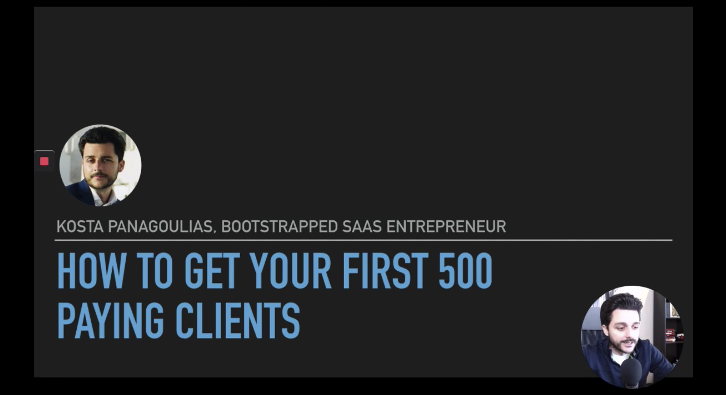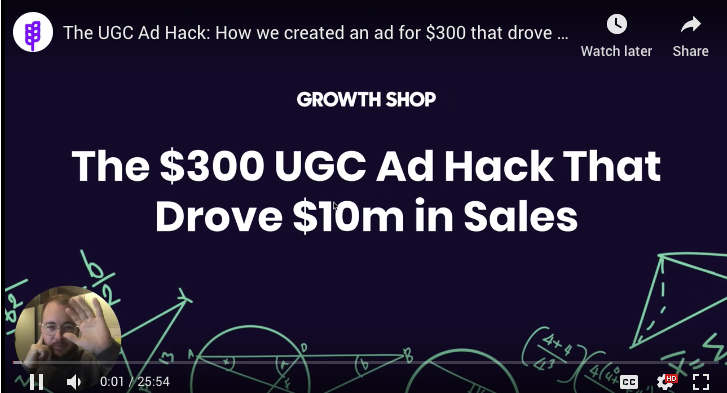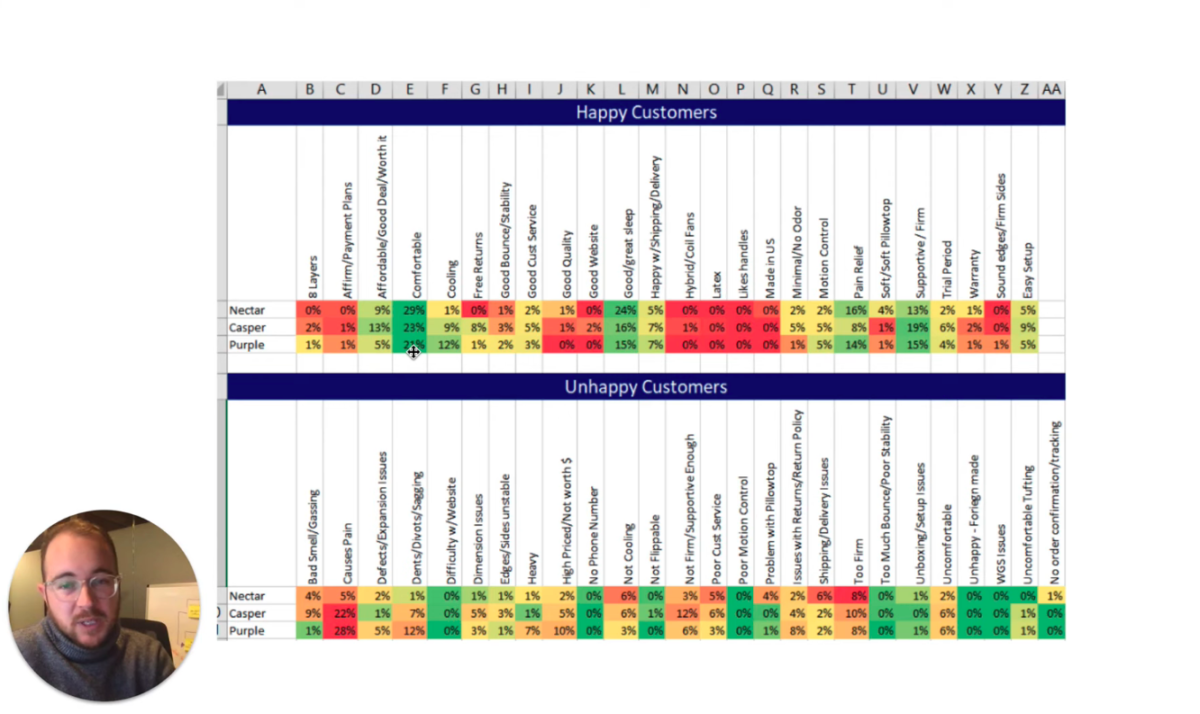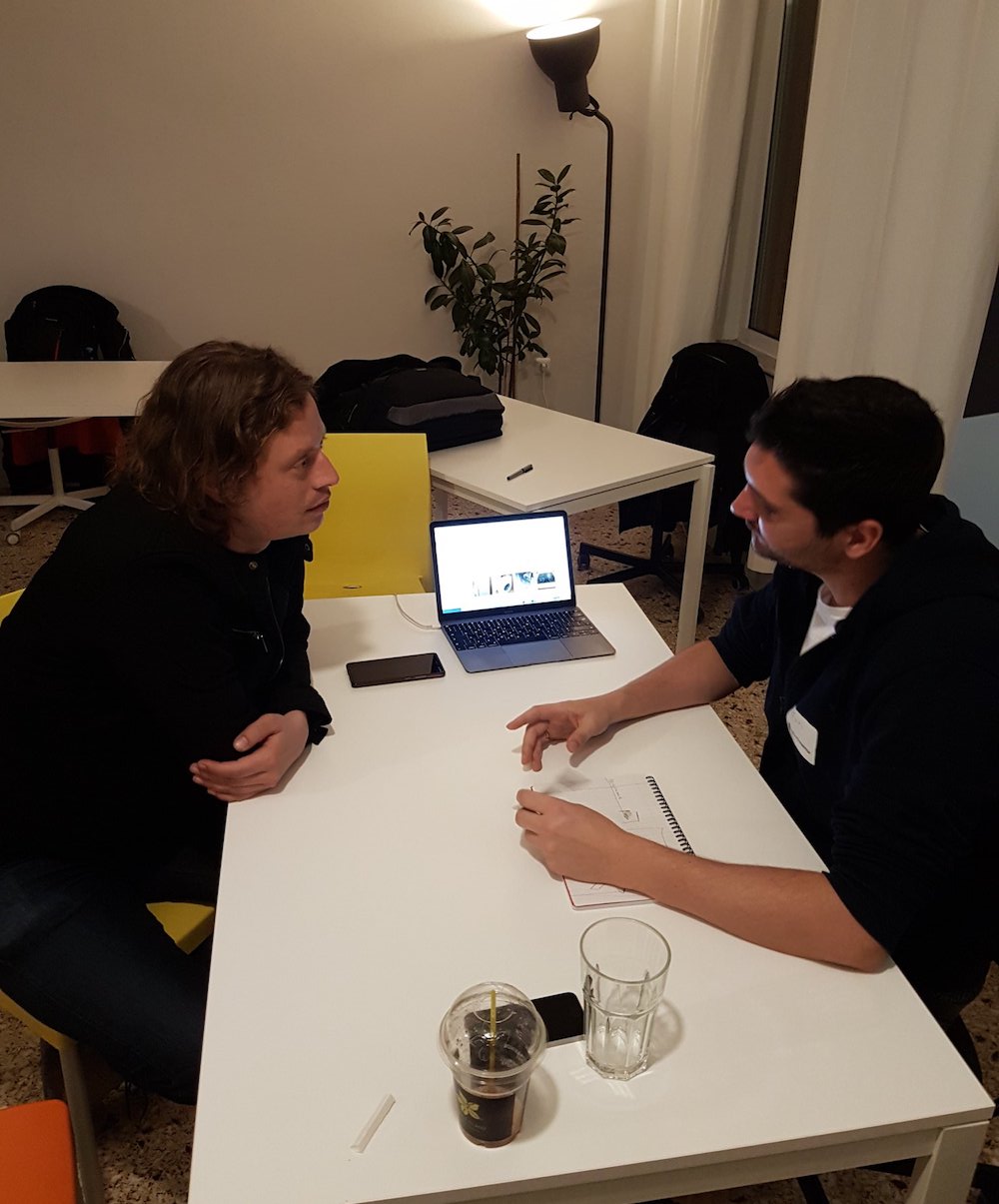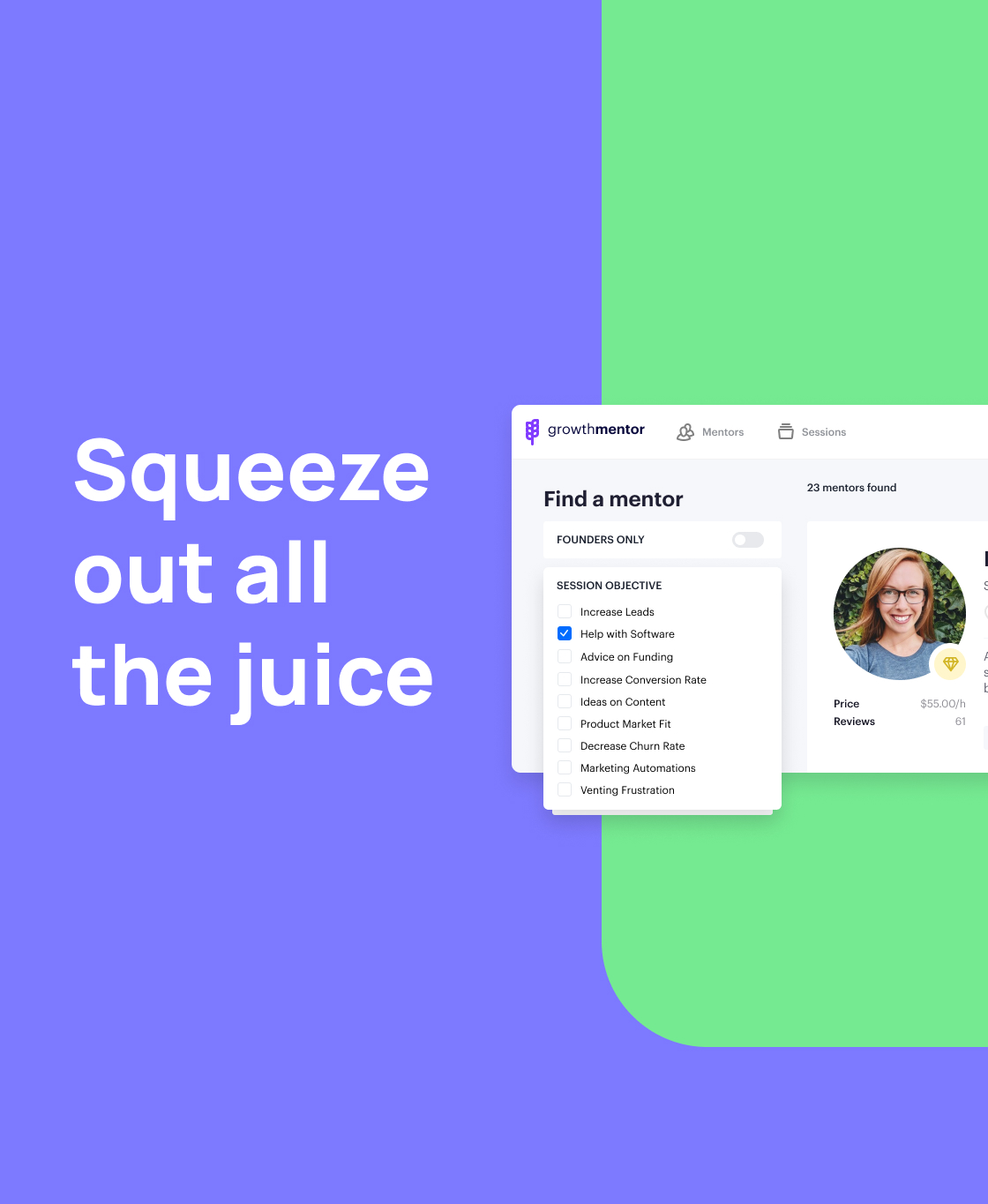7 Actionable Marketing Takeaways from Growth Mentor Summit 2019
I feel humbled to be part of the October batch of new mentors here at Growth Mentor (hello everyone!). But it’s not merely the mentoring part that drew me to the platform. It’s the learning aspect, first and foremost.
As a mentor, you can also tap into the knowledge and experience of the platform’s incredible experts through 1:1 sessions which is something I’ve enjoyed since I joined. But learning doesn’t stop there. There are plenty of resources and a thriving community to exchange lessons and brainstorm ideas with.
And then there’s Growth Mentor Summit which is something else entirely. Imagine a virtual conference where you can watch (and replay) talks from over 50+ growth leaders on any marketing topic you’d like, all from the comfort of your home.
I surely did. And although it would take more than 3k words to do the recap of all talks, I’ve chosen the ones that stood out to me the most and gathered some takeaways below. Hope they are useful!
Experiment with SEO tactics that work in 2019 and beyond
5 SEO strategies to supercharge your user acquisition by Jake Stainer
SEO goes far beyond keyword research and churning out new articles on a weekly basis. Jake walks us through five techniques that every smart SEO should be paying attention to going into 2020.
Here are my top two picks:
- Mashup SEO – use already existing databases that allow API to create landing pages with “syndicated content”. For instance, if your page is about customer loyalty, you can pull all the loyalty quotes or conversations from Twitter. Similarly, you can use Buzzsumo to source top content on loyalty and list it on your site.
- Robin Hood SEO – 12% of all queries have Featured Snippets and more than 8% of all the clicks for those searches are on the featured snippet. This is a huge opportunity! Use Hrefs to find out who ranks for Featured Snippets in your niche and replicate their tactics (and do it better) to outrank them. Another tactic here is to create comparison, integration, or overview pages targeting competitor keywords.
Split test your cold outreach emails
How to Cold Email For Link Building Without Looking Like a Spammer by Dave Schneider
Effective outreach starts with a high quality lead list, that’s a no-brainer. But it’s personalization that gets you through the door. There’s a challenge though. How to strike a balance between highly personalized emails and scaling it through automation?
Dave suggest the scientific approach: send 100 carefully crafted emails + 100 emails that are still somewhat personalized but automated. Crunch the numbers and see what works for you, then find ways to scale the winning approach.
Another out-of-the-box idea is the forwarding technique. Let’s say you’re doing a podcast outreach. Instead of you asking to be featured on it, you first send it to “your assistant” and let them pitch it to the podcast author (with your original “recommendation” email in the thread). I wonder, has anyone else tried it? 🙂
Growth Marketing Tactics – From Growing Revenue to Reducing Churn
Growth Marketing Tactics – From Growthing Revenut to Reducing Churn by Agata Krzysztofik
Growth doesn’t happen only on the acquisition stages of the customer journey. It applies to the entire funnel: from awareness all the way to referral. Being good at growth means finding a systematic way for identifying your top ROI channels. How? By looking at your persona’s entire customer journey and exploring ways to trigger them.
Agata walks us through each step of the funnel along with the specific KPIs and examples. My favorite ones are from the Retention bucket and include:
- Headspace who tapped into partnerships: one was with airlines to provide inflight meditation and another one with Nike to add mindfulness to sport activities. They’ve also diversified their customer segments and started targeting children in their new “Headspace for Kids” section.
- CartStack who tackled retention by crafting personalized handwritten “thank you notes” for every single customer. They’ve also gifted onesies to customers who have become parents.
Increase your conversions with organic Quora marketing
Organic Quora Marketing That Converts by Aazar Ali Shad
Often seen as a platform to help you boost traffic, Quora can also bring conversions. In Aazar’s case, his Quora strategy resulted in a 3.3% conversion rate, 27 demos and 9 customers. Here are his top hacks:
- Focus on optimizing your Quora profile – go beyond title, description, and your website URL. Think of a concrete call to action (you can offer a free trial) and a social proof (it can be a tweet featuring you). Here’s what folks at Ahrefs recommend.
- Use Quora’s SERP rankings – if you don’t rank top 10 for your chosen query (yet), it’s likely that Quora does. It’s worth identifying high intent keywords (e.g. [competitor] pricing) and answering related Quora questions that are already ranking.
- Ask new questions anonymously – those can be questions around your user’s pain points that your content already answers well.
- Make a pod – create a group of friends who can upvote your answers. This increases your chances to appear in the Quora digest.
- Bonus: findbetterquestions.com tool helps you identify questions with the most views and followers and low number of answers. These are the ones you should be tackling first.
Set up a well-oiled growth marketing engine in 90 days
Growth Marketing: From Framework To Experimentation in 90 Days by Christoph Schachner
Many startups jump right into their growth strategy and experimentation without: a. knowing what growth marketing is, b. assessing whether it makes sense for their business and situation. This phase is what Christoph calls “setting the stage”.
Before embarking on the 90-day growth marketing journey, it’s mandatory to “check in” and make sure you have the correct mindset to start with:
Here are a few highlights from this action-packed talk:
- You’re ready to do growth marketing if you: have a product-market fit (although you can also use growth strategies when you’re still figuring it out), have the resources and willingness to test, are structured about experimenting and documenting learnings, and have access to data
- Be meticulous about documenting all your learnings (wins and failures) – store them in one central spreadsheet for future experiments.
- Successful experiments should be based on a strong hypothesis, data, and be scalable, not just happen once.
- Choose one of the four growth frameworks to work with: pirate funnel, bullseye framework, experiment backlog, or periodic table of growth
- Define your growth goals: look at both your North Star Metric (e.g.”invite 2 colleagues in 7 days”) and One Metric That Matters (e.g. number of signups per day) and adjust them as you go
- Get creative about gathering both qualitative and quantitative data to get a full picture – it can be online chats, user interactions captured with Hotjar or Browsee, online surveys that allow you to build personas, your channels effectiveness data, etc
- Beware of these errors in experimentation: a. not focusing on the correct KPI (e.g.: when you want to increase your signups by changing your homepage, the right metric might be the number of clicks on the signup button, not signups since there might be one more step there), b. not taking into consideration internal resources (go for those that can be achieved easier with what you’ve got), c. not making significant changes (when your traffic is still too low, changing button colors might not be the best place to start)
Get into the grind with outbound sales
How to get your first 500 paying clients on a bootstrapped budget by Kosta Panagoulias
For those mostly living in the inbound marketing world (like myself) and never having to pick up the phone and convince customers to sign up, cold-calling and outbound sales sound scary, to say the least.
Through years of trial and error, Kosta learned the ropes of outbound and single-handedly got his first 500 paying customers. He packed his tactics into a 9-step playbook.
Before diving into it, though, he shared his six must-have criteria to getting your first paying customers. Failing in one of them, he says, can dramatically reduce your chances of success.
Here’s what you need to do:
- Have a market size that’s big enough – this will vary from business to business, but for Kosta it was 30,000 potential customers
- Be able to reach the key decision-makers – otherwise, you’re relying on gatekeepers to pitch your product for you
- Develop thick skin – be able to block out the negative comments and rejections. Not everyone is going to like your product and thats’ ok. Just be committed to getting your share of the market and you’ll be fine.
- Be persistent – sometimes you need 7-10 touchpoints to sell, so don’t give up to early in the outbound process. Unless they actually tell you “I’m not interested”, keep going.
- Provide exceptional service to your first customers – they are your pioneers, your investors (if you’re bootstrapping), and brand ambassadors. They will give you your first referrals and fund your business with revenue.
- Forget any other plan B – if you’re jumping into it, do it completely. If you have a grain of doubt in your mind, your chances of failure increase substantially.
And here are top takeaways from Kosta’s playbook:
- If your outbound sales tactics don’t work, 9 out of 10 times it’s because your content and execution sucks. You really need to understand how your audience behaves and reacts. Narrow your niche way way down and really get into their shoes before preparing your pitch.
- Words matter – you have to write your emails and phone scripts the same way you talk so that it sounds real and natural. The most effective cold outreach should not feel cold.
- Using email engagement metrics, prioritize who to follow up with in a structured way.
- Do not get complacent. Keep feeding your pipeline and dedicate at least 2 hours per day prospecting and cold calling.
Finally, the real challenge is execution. If you’re willing to make a real commitment and get into the grind, you can succeed in outbound sales without spending thousands in paid ads.
Use SWOT analysis to create the right ad creative
The UGC Ad Hack: How we created an ad for $300 that drove $10m in sales by Mark Patchett
So, that’s how the story goes: Mark was in the super competitive mattress business and needed to differentiate his strategy from the competitors who all seemed to have been using the same playbook. Without millions in his budget, he needed to be scrappy and much faster.
What did he do? He created an ad that drove an insane ROI. Here’s how:
- Produced at a super low cost – the ad wasn’t polished. It was a bunch of user-generated videos stitched together, but it created a solid moat consolidating a huge amount of social proof
- Used Facebook algorithm to scale the target audience to 180M+ using broad audiences
How did it he do it? Using a classic SWOT analysis thanks to which he could identify what mattered most to his customers AND to his competitor customers. Here’s how:
- Pulled the reviews – used 5 star reviews from their website and scraped reviews of the top 3 competitors from their websites and other review sites (e.g. TrustPilot, Amazon, BBB, etc)
- Organized all the ~200 reviews into themes and ran a frequency count (# of people mentioning specific factors)
- Found patterns that indicated their strengths and competitor weaknesses and vice versa
- Finalized their talking points (3-5 key messages)
The way he got video reviews from customers was by contacting those most recent 5 star reviewers (and frequent buyers if you can) and organizing a contest.
The desired output were 30, 60, and 90 second clips optimized for different platforms. All of the videos used the fast-paced “clip – quote” sequence alternating between videos and user quotes, offered subtitles, and relevant calls to action.
There were several variations but they all had two key components:
- The experience of unboxing and using the product,
- The feeling/outcome/benefit/EMOTION that came with it.
At the end of the ad, here’s what you want your audience to feel: “I get it. I’m like these people. This isn’t some big budget thing that’s obviously trying to sell to me.”
And that’s how it’s done.
The ad produced for $300 ran for months and got 45 million views, 54k shares, 24k comments, and most importantly $10 million in sales.
And there you go, here are my seven takeaways from the Growth Mentor Summit 2019!
The good news is that you can still catch up easily by watching the replays.
I know I will as I still have a few really good ones bookmarked.
To motivate myself to do so, I’ve added those talks to my 2020 self-development goals for January.
Want to join me?
